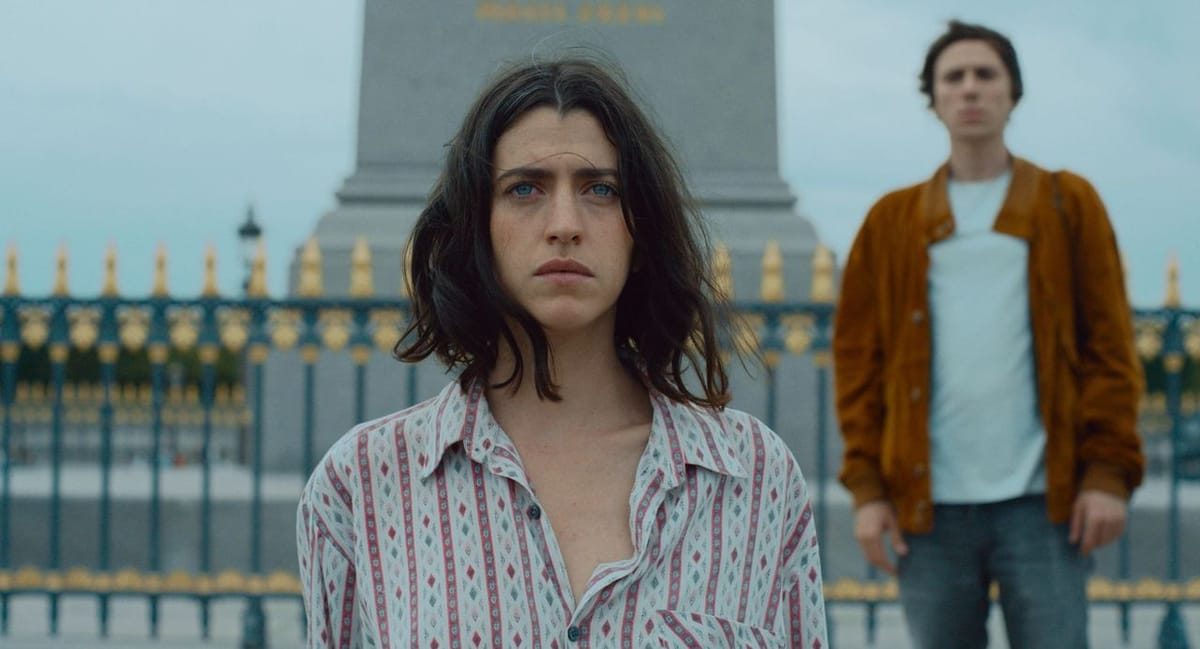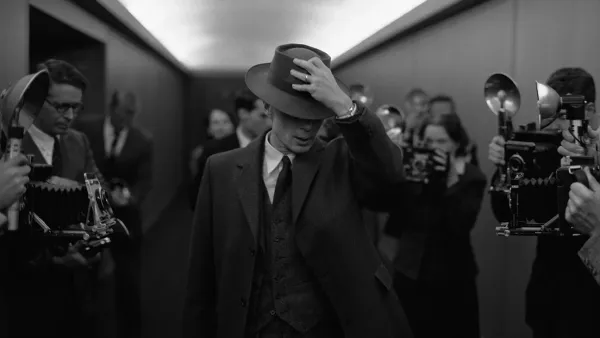Paul & Paulette Take a Bath: Film Review
Presenting itself as a traditional indie romcom, Paul & Paulette Take a Bath (2024) asks the viewer to question our culture's voyeuristic fascination with ‘true crime' and macabre historical events.

Presenting itself as a traditional indie romcom, Paul & Paulette Take a Bath (2024) asks the viewer to question our culture's voyeuristic fascination with ‘true crime' and macabre historical events, such as Marie Antoinette’s famous execution: a scene which is playfully ‘recreated’ by our two protagonists, in its exact spot, within the first few opening minutes of the film.
The idea originated from director Jethro Massey having seen a friend's selfie on Facebook of him sitting in Winston Churchill’s bathtub. This made him think about “the way a place changes when you tell a story about it, a celebrity fascination that I think we all get.” However, Paul & Paulette’s interests are a little darker than taking photos in Winston Churchill’s bath.
Paulette enjoys visiting sites where horrible murders have happened and re-enacting them, so that she can try to empathise with those who have passed and those who have committed horrific deeds. She meets Paul, an American photographer, in a chance encounter near the site of Marie Antoinette’s execution. He helps her to recreate Marie Antoinette’s death, cutting Paulette’s hair as the executioner apparently cut Marie Antoinette’s before her death, and takes a photo of her kneeling in the spot where Marie Antoinette was killed. Paulette takes his number, and soon they begin a routine of visiting France’s most macabre murder sites, recreating them and taking photos.
For Paulette, their game is a way to understand and work through her past trauma. But for Paul, it’s mostly just a way to get close to the charismatic if slightly aloof Paulette. Paul obviously has a crush on Paulette, and they later begin a sexual relationship, but the movie does not end with the two as a romantic couple. Director Jethro Massey wanted to showcase the importance of platonic relationships, that are often overlooked in films. By the end of the film, Paul and Paulette’s game gets a little too close for comfort when Paul rents the apartment of a famous mass-murderer, his attempt to bring Paulette closer to him. Massey does a good job of helping the viewer to feel and understand the tragedy in France's recent past.
Without being too depressing, the film also touches on France’s complicity in atrocities such as the “human zoo” where people from colonised countries were held captive, abused and “exhibited.” The scenes take place chronologically in the film, so that they start with a far-away historical event and end in the most recent, “upping the stakes” each time. Massey wanted to see where “the line would be crossed” for each audience member. Which would be the moment where the audience member thinks that Paul and Paulette’s game has become too inappropriate and uncomfortable?
Predictably, there are moments where Paulette falls into the category of “Manic pixie dream girl” but this is forgiven when we realise that her true motives are much deeper and darker than her just existing to give meaning to some boring guy’s life. Overall, Paul & Paulette Take a Bath (2024) is commendable for the way that it approaches horrific events with sensitivity and curiosity, and the empathy it shows to its murder-obsessed protagonist, as Paulette’s fascination for “bad things” is more than just simple, greedy voyeurism, but a reaction to a traumatic event that happened to her as a child.
Support OBSCURAE
Help us keep publishing independent work.
👉 Support for £5/month
👉 Or £50/year — and receive a free 20oz OBSCURAE Mug!




